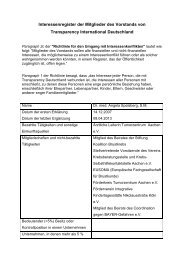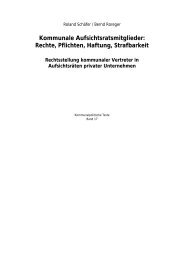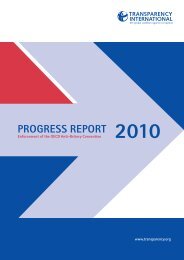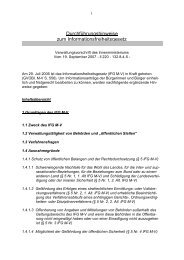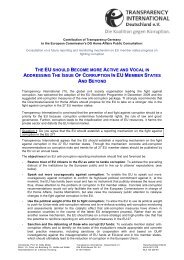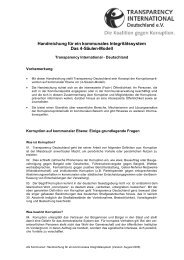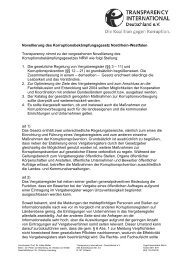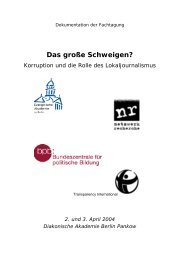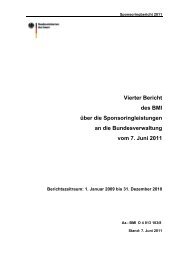The Puppet Masters - Transparency International
The Puppet Masters - Transparency International
The Puppet Masters - Transparency International
Create successful ePaper yourself
Turn your PDF publications into a flip-book with our unique Google optimized e-Paper software.
trust. He is not, therefore, an ultimate controller but rather acts on behalf of someone<br />
else and is under fi duciary obligations.<br />
• Th e settlor, because he initiated the trust and contributed the asset to the trust<br />
in the fi rst place. He, however, is no longer able to exercise control over the<br />
trust.<br />
• Th e benefi ciary, because he stands to benefi t. But he similarly cannot exercise<br />
control over the trust.<br />
Th e concept of benefi cial ownership cannot be applied in a straightforward manner in<br />
these instances without knowing more about the context.<br />
It is interesting to note that, when discussing the applicability of benefi cial ownership<br />
obligations to trusts, compliance offi cers interviewed in connection with this study<br />
generally confi rmed that all standard parties to the trust (settlor, trustee, and benefi -<br />
ciary) are relevant and should be considered. One can see why: If one person contributes<br />
an asset, another manages it, and yet another will benefi t from it, who really is in<br />
control? In whom should a compliance offi cer be most interested? When a service provider<br />
is dealing with a prospective client, he does not know at that point (at the beginning<br />
of a relationship) what the relationship will involve in practice. All he or she has is<br />
some information provided by his or her client. In that case, the wisest course is to<br />
gather information on all parties who could be relevant.<br />
Control in Foundations<br />
Th e vehicle of the foundation could be subjected to a similar analysis as a trust: It also<br />
cannot be owned by someone else. Although control might appear less problematic in<br />
this case (the director or board of the foundation is the obvious fi rst point to look at),<br />
in the context of a private foundation with a private benefi ciary, such a fi rst-round<br />
analysis would be too simplistic—the private benefi ciary is also of interest.<br />
Th e Relationship between Ownership and Control<br />
Th e FATF defi nition also refers to “the natural person(s) who ultimately owns . . . a<br />
customer.” Because natural persons cannot be owned, the “customer” mentioned as<br />
being “owned” can only refer to a corporate vehicle. But what does ultimate ownership<br />
of a corporate vehicle really mean? Th e defi nition stipulates that, in such cases, the<br />
benefi cial owner includes all people who have “ultimate eff ective control.” According<br />
to the FATF methodology, for companies, this normally would entail identifying the<br />
people who have a controlling interest and those who make up “the mind and management<br />
of a company.” 11 So the defi nition moves from someone who owns a corporate<br />
entity to someone who holds a controlling interest in it. In other words, ownership<br />
is a proxy for control and, in this context, is only relevant to the extent that control can<br />
be inferred from it.<br />
11. See 5.5.2 (b) of the Methodology for Assessing Compliance with the FATF 40 Recommendations and<br />
the FATF 9 Special Recommendations, p. 16, available online at http://www.fatf-gafi .org/dataoecd/16/54/<br />
40339628.pdf.<br />
Part 2. <strong>The</strong> Benefi cial Owner I 21



